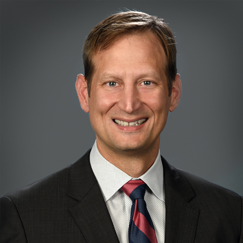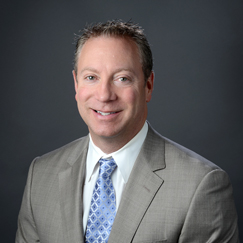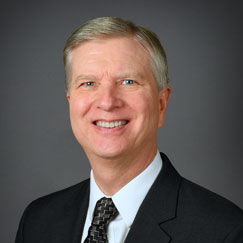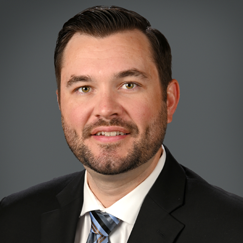A Deep Dive into Labral Repair Surgery: What Athletes Need to Know
When your athletic career or passion is on the line due to a shoulder injury, the prospect of labral repair surgery may loom large and somewhat daunting. For athletes and sports enthusiasts, understanding what this surgery involves is not just a matter of curiosity but a critical step towards healing and returning to the game. This comprehensive post will take you through everything you need to know about labral repair surgery, from sign and symptoms to the rehabilitation timeline, offering insights that can help you make informed decisions and prepare mentally and physically for the road ahead.
Understanding the Labrum and its Importance for Athletes
The labrum is a piece of fibrous cartilage that lines and reinforces the rim of the shoulder socket. It provides stability to the shoulder joint and plays a pivotal role in maintaining its range of motion. Athletes who frequently engage in overhead activities, such as throwing sports or weightlifting, are particularly susceptible to labral tears due to the repetitive stress these actions exert on the shoulder joint.
How Labral Tears Occur
Labral tears can be the result of a single traumatic event, such as a dislocation, or they can develop over time due to overuse. Athletes may notice these tears through symptoms such as shoulder pain, a feeling of instability in the shoulder, decreased range of motion, or a popping or grinding sensation during certain movements.
Signs and Symptoms of a Labral Tear
Recognizing the signs of a labral tear is the first step in seeking diagnosis and, potentially, surgical intervention. Common symptoms include:
- Persistent shoulder pain, particularly during overhead movements
- Instability or a feeling that the shoulder will slip out of place
- Catching, locking, popping, or grinding sensations in the shoulder
- Decreased range of motion
- Weakness or loss of strength in the affected shoulder
If you’re experiencing one or more of these symptoms, consulting a sports medicine professional is crucial to receive an accurate diagnosis and develop a treatment plan.
The Diagnostic Process for Labral Tears
Diagnosing a labral tear typically involves a combination of patient history, physical examination, and imaging studies, such as MRI scans or arthrograms, which involve injecting a contrast dye into the shoulder joint.
Arthroscopy and its Role in Diagnosis
Arthroscopy is a minimally invasive surgical procedure that allows the surgeon to visualize the inside of the joint using a camera. It’s not only an invaluable tool for diagnosis but also a technique used in labral repair surgery itself.
Preparing for Labral Repair Surgery
The decision to undergo labral repair surgery is often reached after non-surgical treatment options have been exhausted or when the tear is significant enough to warrant surgical intervention.
Importance of Pre-Surgery Planning
Pre-surgery planning involves discussions with your orthopedic surgeon, pre-operative health assessments, and preparing your home environment for post-surgical recovery.
Determining the Right Time for Surgery
Timing the surgery is important, especially for athletes. It’s not just about physical healing, but also about timing your recovery so that you’re ready to resume training and competition without risking further injury.
The Procedure: What to Expect During Labral Repair
Labral repair surgery is typically performed arthroscopically, which means a tiny camera and instruments are inserted into the shoulder joint through small incisions.
Step-by-Step Look at the Procedure
- Anesthesia: You will be placed under general anesthesia, meaning you’ll be asleep for the entire operation.
- Incisions and arthroscopic inspection: Your surgeon will make several small incisions around the shoulder and insert the arthroscope to inspect the joint.
- Preparing the labrum and socket: Any loose labral tissue will be removed, and the region where the labrum attaches to the glenoid (shoulder socket) is roughened up to promote healing.
- Anchoring the labrum: Small holes are drilled in the bone, and sutures are passed through the labrum. These sutures are then tied to anchors placed in the bone to secure the labrum in place.
- Closing the incisions: After the anchors are in place, the incisions are closed, and a sterile dressing is applied.
Post-Surgery Recovery: The Long Road Back to Your Sport
For athletes, post-surgery recovery is as near a marathon as you’ll get off the field. Patience and dedication to the rehabilitation process are paramount for a successful return to sports.
Immediate Post-Operative Care
Right after surgery, you’ll likely be placed in a sling. It is essential to follow your surgeon’s guidelines for ice, rest, and prescribed pain medications during this period.
Early Rehabilitation and Passive Motion
In the first week or two, passive motion exercises without using your muscles will begin. These will help prevent stiffness in the joint.
Protecting the Repair with Limited Motion
For the first 4 to 6 weeks, movement is limited to avoid stressing the repair. Your surgeon will provide a specific protocol that your physical therapist will guide you through.
Returning to Training and Sports Participation
Recovery for athletes can be broken into phases. These stages are not only physical milestones but also tests to ensure readiness to gradually return to play.
Physical Therapy and Strengthening
Physical therapy focuses on regaining strength and range of motion. This will start with basic stretching and gradually progress to resistance and functional training.
Foam Rolling and Mobility
Incorporating foam rolling and mobility drills into your routine can help maintain the soft tissue health of the shoulder and complement the work done in physical therapy.
Gradual Return to Intensity
Return-to-sport protocols are tailored to each patient, slowly ramping up the intensity of training to ensure the shoulder can handle the demands of athletic play.
Preventing Future Labral Tears
For athletes, the goal after labral repair is not just to return to their sport but to stay there. Preventing future injuries involves a combination of technique, conditioning, and self-awareness.
Improving Technique and Mechanics
Proper technique, particularly in sports that require overhead motions, is crucial. Work with a coach or trainer to refine your movements and minimize the risk of shoulder injuries.
Strengthening the Shoulder and Core
A strong shoulder and core can help prevent undue stress on the labrum. By incorporating exercises that target these areas into your training routine, you can build the stability required for athletic performance.
Body Awareness and Listening to Your Shoulder
Developing body awareness can help you recognize when your shoulder is fatigued or stressed, so you can adjust your training accordingly and avoid pushing beyond your limits.
Choosing the Right Surgeon and Clinic for Labral Repair
Selecting the right surgeon and clinic for your labral repair surgery is a critical decision that can significantly impact your short-term and long-term outcomes.
Researching Surgeon Experience and Patient Outcomes
Look for a surgeon with expertise in sports medicine and a track record of successful labral repair surgeries with athletes.
Seeking a Multidisciplinary Approach
A clinic that offers a multidisciplinary approach, including sports medicine physicians, physical therapists, and performance coaches, can provide comprehensive care tailored to athletes’ needs.
Considering Patient Experience and Comfort
The environment where you’ll undergo surgery and rehabilitation should be comfortable and conducive to the athlete’s mindset. High-quality facilities with a focus on patient experience are ideal.
Conclusion: The Partner You Need for Your Journey
Labral repair surgery is a significant step in an athlete’s life, and it’s essential to have the right partner on your recovery path. The physicians at Plano Orthopedic & Sports Medicine Center are committed to providing the highest quality care, using the most advanced techniques and technologies to ensure you’re back in the game stronger than before.
With dedicated professionals guiding you through the surgery, rehabilitation, and eventual return to your sport, you can be confident in taking the necessary steps to heal and achieve your athletic goals.
For more information on shoulder surgeries, including labral repair, and to schedule a consultation with a POSMC surgeon today, visit our Shoulder Doctors Page.
Call POSMC today!
To schedule an appointment with one our specialists, contact our scheduling department at 972-250-5700 or request an appointment online.
POSMC is a full-service medical facility specializing in the evaluation and treatment of orthopedic injuries. The practice is led by a group of 12 board-certified and fellowship-trained orthopedic surgeons and a physical medicine and rehabilitation physician. Contact us today!
Dr. Randal L. Troop
Shoulder, Knee and Sports Medicine
View Bio
Dr. Michael S. Howard
Shoulder, Elbow and Upper extremity
View Bio
Dr. John E. McGarry
General Orthopedics, Shoulder, Knee and Sports Medicine
View Bio
Dr. Earl R. Lund
Shoulder, Elbow, Hand and Wrist
View Bio
Dr. Jonathan D. Ringenberg
Shoulder, Knee and Sports Medicine
View Bio





